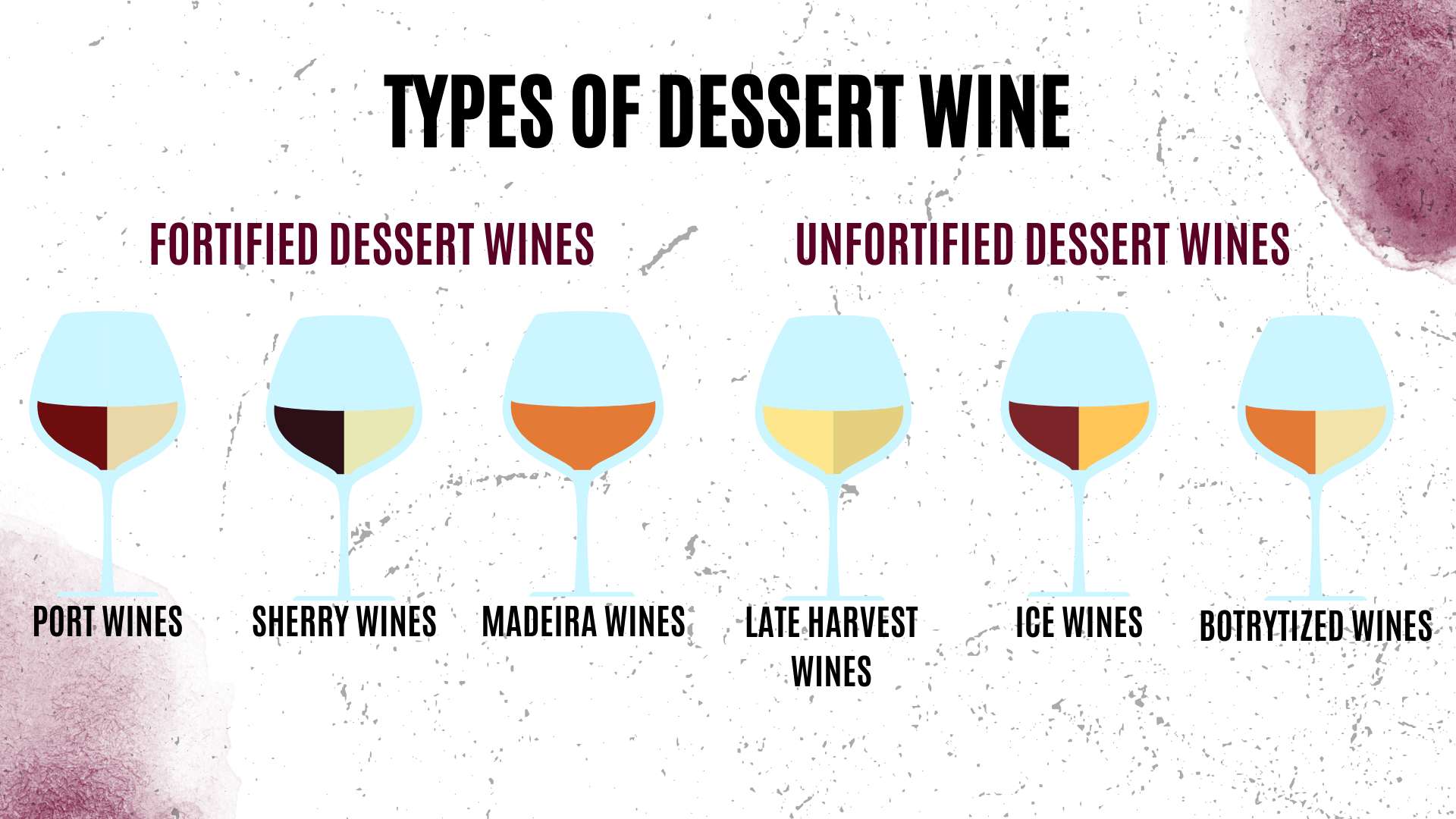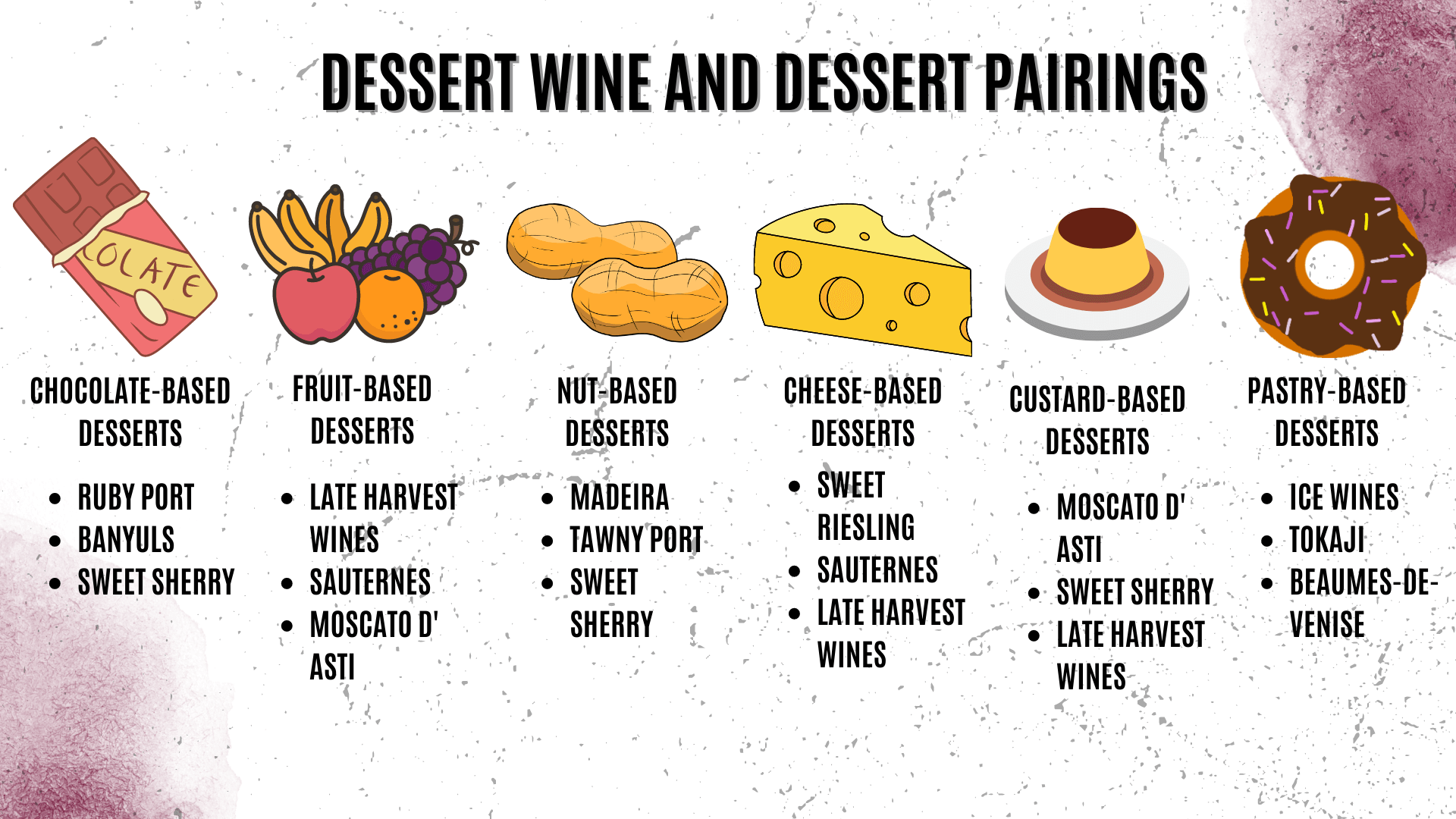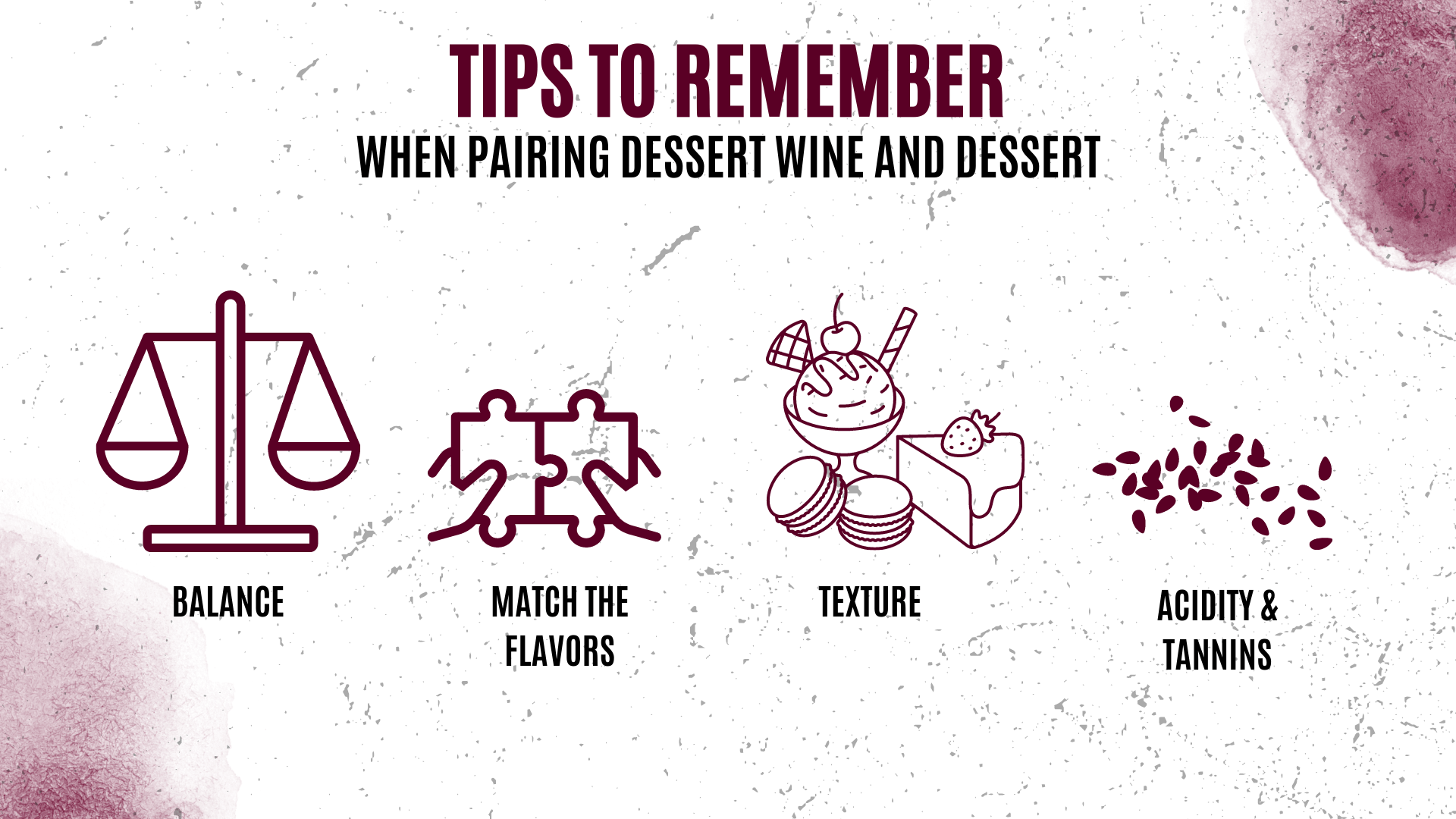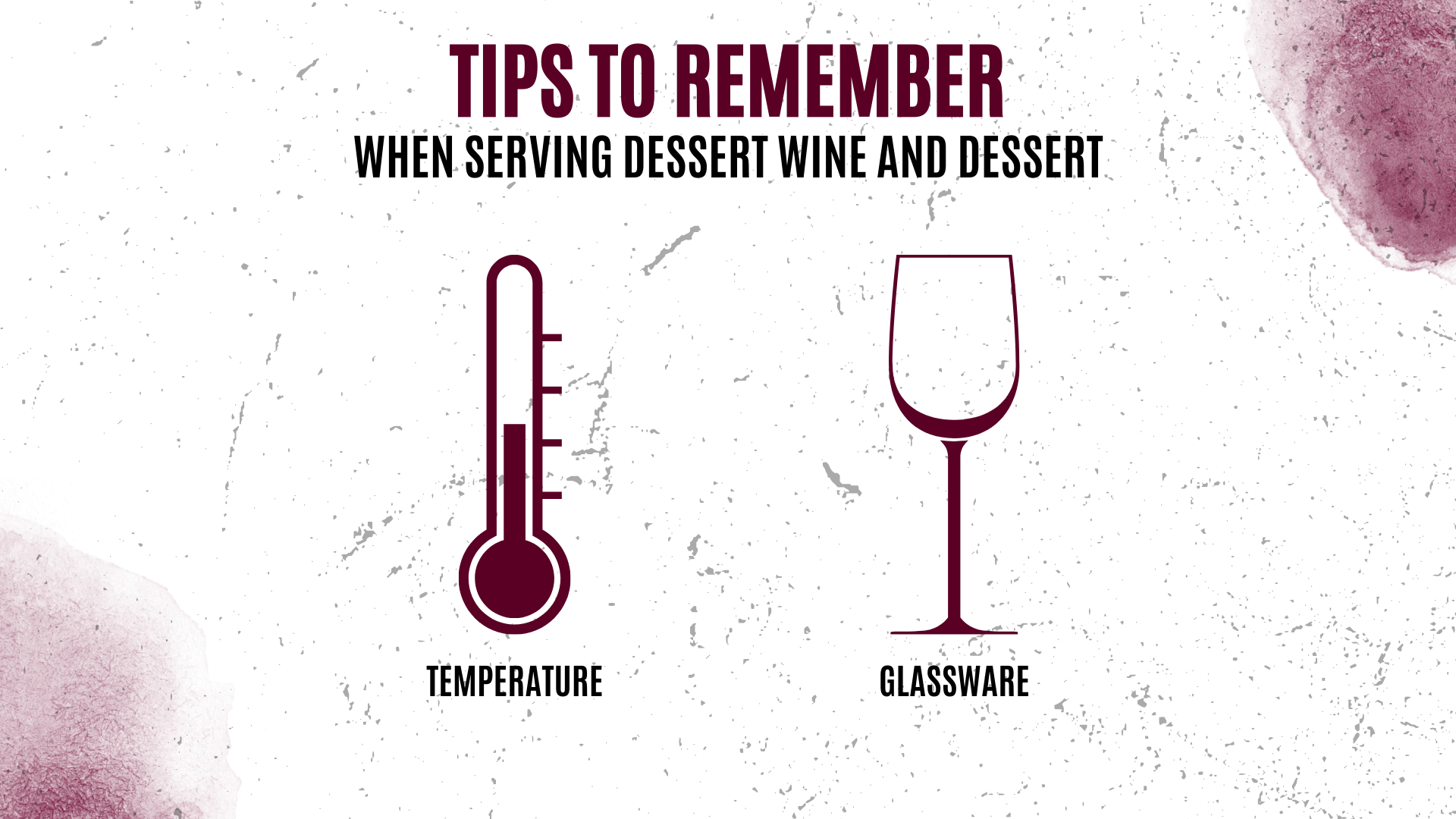Introduction:
Dessert wine and dessert pairing is a culinary art that can elevate the dining experience, enhancing the flavors of both elements. In this guide, we will explore the characteristics of different dessert wines and various dessert types and provide tips and recommendations from top sommeliers for finding the perfect match.

I. Types of Dessert Wines
A. Fortified Dessert Wines
- Port: A rich, sweet wine originating from Portugal, Port offers a perfect pairing for chocolate, blue cheese, or fruit-based desserts, with its robust flavors and velvety texture.
- Sherry: Hailing from Spain, Sherry is a versatile wine ranging from dry to sweet. Its unique profile allows for pairings with various desserts, including almond-based confections, creamy custards, and chocolate desserts.
- Madeira: A fortified wine from the Madeira Islands, Madeira boasts a range of sweetness levels and a singular flavor profile, making it an ideal companion for caramel, nut-based desserts, or even savory dishes with sweet components.
B. Unfortified Dessert Wines
- Late harvest wines: Produced from grapes left on the vine to increase sugar concentration, late harvest wines yield sweet, fruity flavors that beautifully complement fruit tarts, cheesecakes, and crème brûlée.
- Ice wines: Made from grapes frozen on the vine, ice wines are intensely sweet and luxurious, pairing exquisitely with desserts featuring tropical fruits, sorbets, or creamy pastries.
- Botrytized wines: Affected by noble rot, these wines offer concentrated sweetness and complexity, harmonizing with blue cheese, fruit-based desserts, or rich foie gras dishes.
II. Desserts That Pair Well with Dessert Wines
- Chocolate-based desserts: Indulge in the decadent combination of Ruby Port, Banyuls, or sweet Sherry with chocolate desserts, as these wines enhance the rich cocoa flavors and create a luxurious experience.
- Fruit-based desserts: Complement fruit flavors and balance sweetness with late harvest wines, Sauternes, or Moscato d’Asti, elevating fruit desserts to a new level.
- Nut-based desserts: Enhance the nutty flavors and provide a rich contrast with Madeira, Tawny Port, or sweet Sherry, adding depth to your dessert experience.
- Cheese-based desserts: Sweet Riesling, Sauternes, or late harvest wines make delightful pairings with cheese-based desserts, creating a harmonious balance of sweetness and creaminess.
- Custard-based desserts: Opt for Moscato d’Asti, sweet Sherry, or late harvest wines to complement the creamy texture and delicate flavors of custard-based treats.
- Pastry-based desserts: Pair buttery, flaky pastries with ice wine, Tokaji, or Beaumes-de-Venise, accentuating the sumptuous pastry elements and elevating the overall experience.
III. Tips for Pairing Desserts with Dessert Wines
- Balance the sweetness levels: Ensure that the dessert wine is sweeter or as sweet as the dessert to prevent either from becoming cloying or overpowering.
- Consider the intensity of flavors: Match bold-flavored wines with rich, intense desserts, and delicate wines with lighter, more subtle desserts.
- Pay attention to the texture of the dessert: Pair creamy or dense desserts with rich, full-bodied wines, and light, airy desserts with more delicate, refreshing wines.
- Don’t forget about acidity and tannins: Acidity in dessert wines can help cut through the richness of a dessert, while tannins can provide structure and contrast.
- Experiment with unusual pairings: While there are general guidelines for dessert wine pairings, don’t be afraid to venture into uncharted territory and discover new, delightful combinations.
IV. Serving Tips
- Ideal serving temperatures: Serve fortified dessert wines slightly chilled (55-65°F or 12-18°C), and unfortified dessert wines chilled (45-50°F or 7-10°C) to enhance their flavors and aromas.
- Appropriate glassware: Use smaller glasses with a tapered opening for dessert wines, as they concentrate the aromas and direct the wine to the appropriate areas of the palate.
Conclusion
In conclusion, pairing dessert wines with desserts is an art form that can elevate your dining experience by bringing out the best in both the wine and the sweet treats. Throughout this guide, we have explored the characteristics of various types of dessert wines and desserts, as well as expert tips and recommendations for finding the perfect match. As you embark on your dessert wine and dessert pairing journey, remember that the key is to strike a balance between sweetness, flavor intensity, and texture while also considering acidity and tannins. Above all, don’t be afraid to experiment and discover new and delightful combinations that suit your palate. Ultimately, the perfect pairing is the one that brings you and your guests the most enjoyment. Cheers to discovering the joys of dessert wine and dessert pairings!
Frequently Asked Questions
Dessert wines pair well with desserts because their sweetness and complexity complement and enhance the flavors of sweet dishes, creating a balanced and harmonious experience.
Chocolate, fruit, nut, cheese, custard, and pastry-based desserts all pair well with dessert wines. The key is to match the wine’s sweetness, flavor intensity, and texture with the dessert.
Ruby Port, Banyuls, and sweet Sherry are excellent choices for pairing with chocolate desserts, as they can enhance the rich cocoa flavors and create a luxurious experience.
Yes, some dessert wines, such as Madeira or certain Sherries, can pair well with savory dishes that have a sweet component, like blue cheese or foie gras.
The dessert wine should be sweeter or as sweet as the dessert to prevent either from becoming cloying or overpowering.
Late harvest wines, Sauternes, and Moscato d’Asti are excellent choices for pairing with fruit-based desserts, as they complement the fruit flavors and balance the sweetness.
While pairing similar flavors can create a harmonious experience, it’s not always necessary. Experimenting with contrasting flavors can also yield delightful and unexpected combinations.
Balance sweetness levels, flavor intensity, and texture when pairing dessert wines with desserts. Additionally, consider acidity and tannins to create a well-rounded experience.
Yes, certain dessert wines like Madeira or some Sherries can be paired with savory dishes that feature sweet components, such as blue cheese, foie gras, or dishes with caramelized elements.






